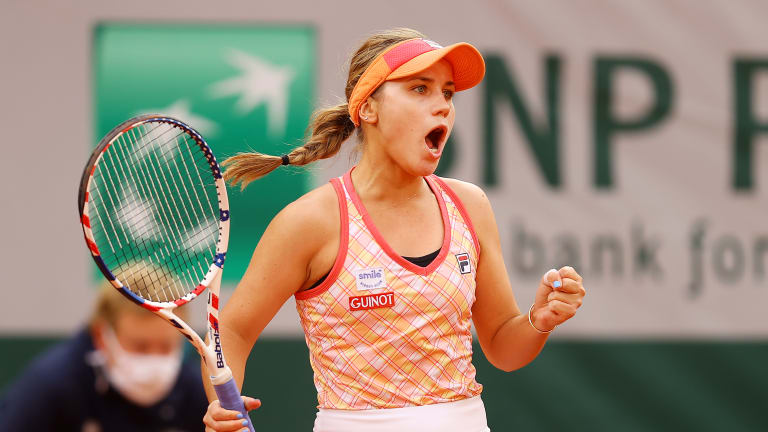Roland Garros
Kenin’s underrated tactical artistry sends her to another major final
By Oct 08, 2020Roland Garros
French Open organizers introduce draw to access ticket sales
By Jan 07, 2025Roland Garros
Coaches Corner: Juan Carlos Ferrero proves essential to Carlos Alcaraz's Roland Garros success
By Jun 14, 2024Roland Garros
What’s next for Novak and Nadal? Four ATP storylines after the Paris fortnight
By Jun 10, 2024Roland Garros
Naomi’s resurgence, Iga on grass: Four WTA storylines after the Paris fortnight
By Jun 10, 2024Roland Garros
Carlos Alcaraz becomes the clay-court champion that he—and we—always knew was possible
By Jun 09, 2024Roland Garros
Coco Gauff wins first Grand Slam doubles title with Katerina Siniakova in dream team debut
By Jun 09, 2024Roland Garros
Coco Gauff is a Grand Slam champion in singles and doubles, exceeding her own expectations
By Jun 09, 2024Roland Garros
From Rafa to Iga: as one owner of Roland Garros departs, a new one has moved in
By Jun 08, 2024Roland Garros
Roland Garros men's final preview: Carlos Alcaraz vs. Alexander Zverev
By Jun 08, 2024Roland Garros
Kenin’s underrated tactical artistry sends her to another major final
The 21-year-old American has feist in abundance. To see her weave her varied shots into a winning whole is to see an artist—a feisty artist—at work.
Published Oct 08, 2020
Advertising

Kenin’s underrated tactical artistry sends her to another major final
© Getty Images
Advertising
Kenin’s underrated tactical artistry sends her to another major final
Advertising

Kenin’s underrated tactical artistry sends her to another major final